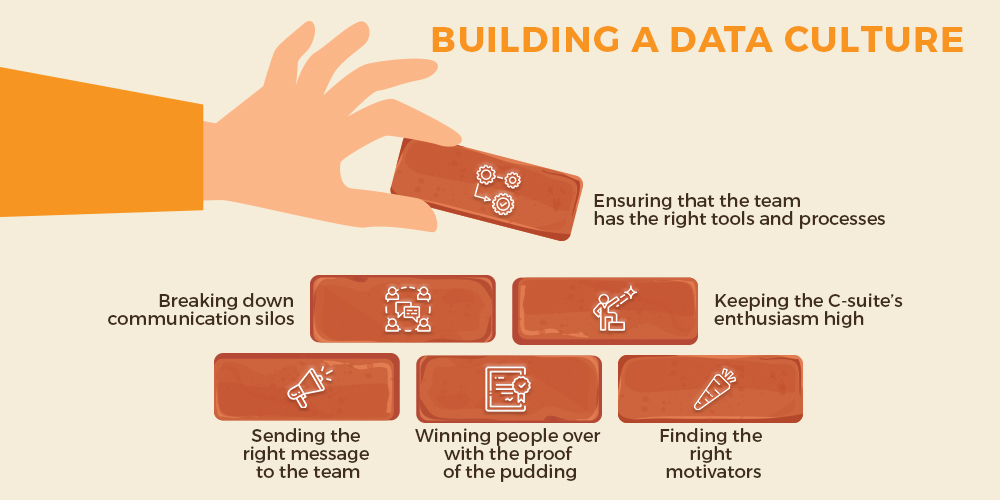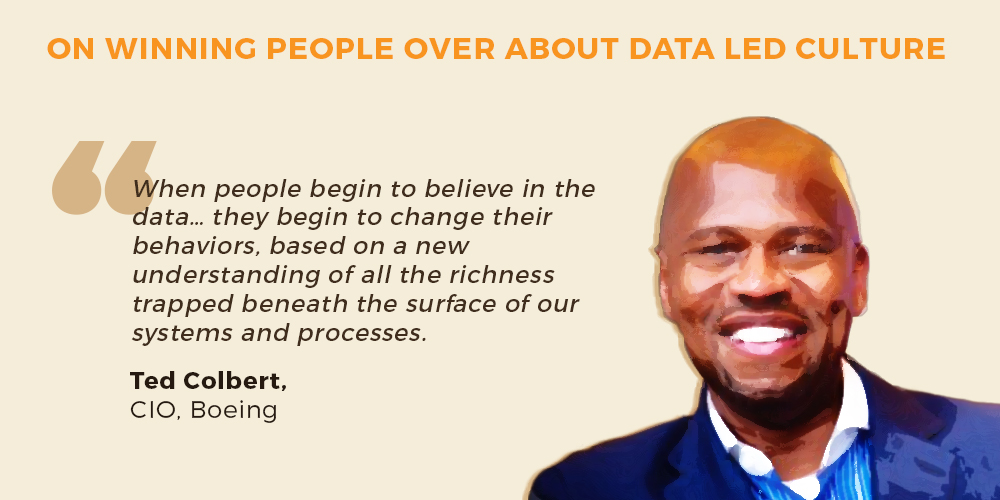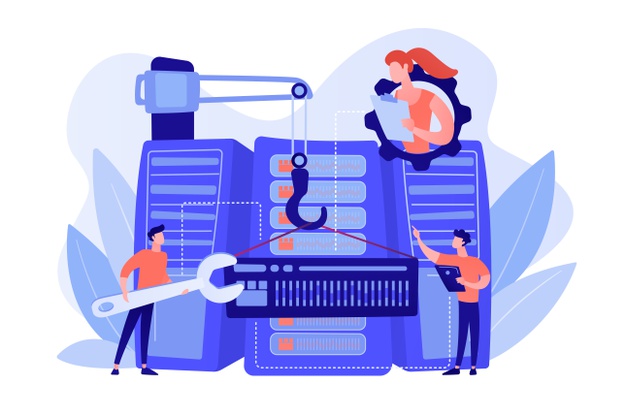
What does it take to bridge the knowledge gap between the digital transformation pioneers and organisations struggling to find their footing? In this data era, the answer is quite simple - data culture. But what does it take to build one? A data culture is one that brings together the talent and the tools necessary to empower business decision making. It cannot be imposed or imported. It must be introduced and encouraged until it is imbibed. This blog takes you through the steps you can take to build a data culture.

There is enough evidence out there to show that we are in the middle of a data revolution. We are collecting more data, finding smarter ways of storing and organizing it, and using it to power AI and ML-led innovations. Yet, while some companies are breaking new ground in data applications, others are struggling with even the basics—unsure how to initiate a digital transformation and sometimes, even questioning its benefits. When the same technology and knowledge is available to organizations across the spectrum, why should this gap exist? According to McKinsey, a healthy data culture could hold the answer.
Why data culture matters?
A data culture is one that brings together the talent and the tools necessary to empower business decision making. It is one in which the leadership is committed to data and its application and actively takes steps to encourage data literacy across the organization. In a data culture or a data-driven organisation, people at every level have a shared purpose—a belief in and an enthusiasm for a data-led future. They understand the benefits of data, recognize the potential for data application in their work and are interested in learning more about accessing and using data to make better decisions.
Building a data culture
A data culture cannot be imposed or imported. It must be introduced and encouraged until it is imbibed. So what does it take to build one?

1. Sending the right message to the team
As a senior leader talking about the power and potential of data, make sure you don’t pitch data culture as a cool experiment or a project with a deadline. No data initiative should be undertaken for data’s sake alone. It is telling that many companies that are ahead of the curve in terms of data call their team the Decision Sciences team and not the Data Analytics team. Building a data culture is a larger, sweeping change. Its roots and target are both the business: specifically, better decision making for the business. So have the end goal in mind and make sure everyone in the team knows it.

2. Winning people over with the proof of the pudding
The message about being a data-led culture must permeate to all levels in the organization through repeated communication and at as many touch points as possible. At the same time, remember that ‘Build something cool and they will come’ is not a great philosophy for organizations to live by. It is more practical to identify specific problems people face as they try to do their work and then show them how data can help make things better. When people see the tangible benefits of data in their work, they will naturally get excited and want in. No amount of evangelism can substitute for that.

3. Finding the right motivators
There are two ways to pitch any data program. One way is to look at it from the compliance or regulatory angle—”We need to do these things. We need to follow these rules or processes. Otherwise, there will be consequences.” The other way is more forward-looking, more futuristic—”Here are all the glorious applications of data and here is where it will take us as a business. Come along for the ride!”
While the second approach sounds ideal, it is often a combination of the two that is most effective, for multiple reasons. For one, people need to realize that while there are great benefits to becoming a data-led organization, these could take time to materialize. A behavioural change towards data cannot wait as long. Two, not all employees are motivated by the bigger picture approach. For many, a tactical, practical reason may work better as a motivator to change their behaviour.
4. Breaking down communication silos
In a data culture, a data scientist cannot be glued to her system in a cubicle on the corner of the floor. She will need to be out and about engaging with different stakeholders, sharing her findings and soliciting feedback, and organizing sessions to help the larger team understand and appreciate the value of data. Simply put, everyone in the organization must be brought in and be made a part of the data transformation.
5. Keeping the C-suite’s enthusiasm high
C-suite buy-in can decide whether your data program lives or dies, which is why you need to build a strong case to champion the program. (In this blog, we discuss some approaches that work for CIOs.) However, this is not a one-time exercise. It is equally important to keep the powers that be apprised of the progress you are making at regular intervals. What initiatives have been undertaken? Where has the funding been deployed? Have you hit any roadblocks? What are your major challenges? Says NBCU’s Davies about how they communicate with CEO Steve Burke, “We have a mantra: even if you have nothing to communicate, communicate that.”
What if the company directors are not all internal? Even better, according to Tak Nagumo of Mitsubishi UFJ Research. “We provide our board educational sessions, our directors ask questions, and all that further deepens their understanding. And it’s good news, too, that directors are not necessarily internal. They bring external knowledge, which lets us blend the external and the internal into a knowledge base that’s MUFG-specific.”
6. Ensuring that the team has the right tools and processes
All said and done, people form only 50% of a data culture. The other 50% includes everything that enables people to make the most of the data available to them. The right tools to access and analyze data. Frameworks, rules and processes that tell them how to handle and share this data. Metrics and baselines that help them evaluate the impact of the data-led decisions they have made. The lean model “Build-Measure-Learn’ is a good one to adopt: people build data-based models, measure the impact of these on their work, and draw insights from them, which feed back into the model and help improve it.
Here are some questions to ask to evaluate whether your organization has the right tools and processes for a data culture:
- Do my people have ready access to the data they need?
- Do they have the training needed to understand and use this data?
- Do they have the right tools in place to analyze large data sets?
- Is automation implemented everywhere possible for reporting and tracking?
- Are people regularly accessing and using data, and sharing their learning?
- Do they know what metrics to track to evaluate the impact of this data?
- Are they being given the right data feedback? Are there enough data knowledge sharing sessions happening regularly?
At I&I, we have helped several clients from the public and private sector in the US shape their data strategy and implement their digital transformation.
If you are on the cusp of this journey, we can help! Get in touch to have a conversation with one of our expert consultants today.


